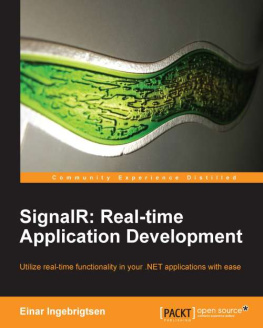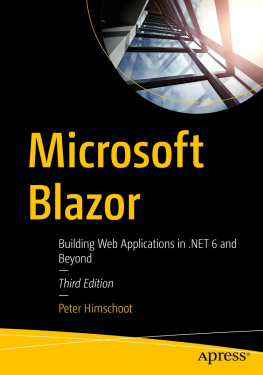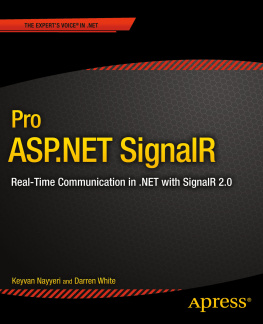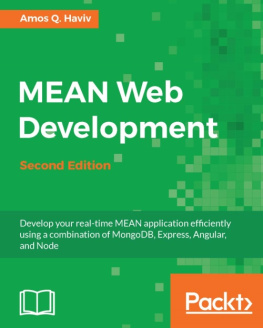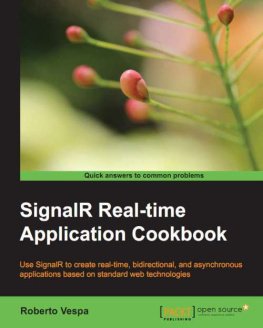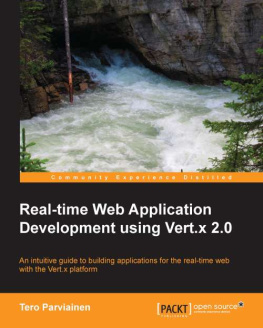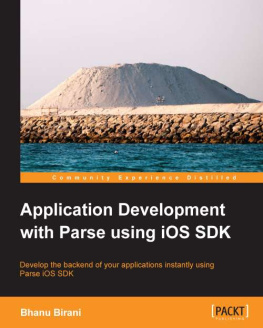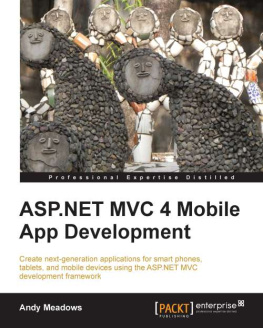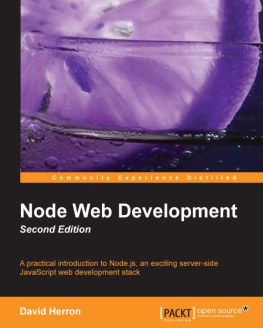About the Author
Einar Ingebrigtsen has been working professionally with software since 1994ranging from games development on platforms such as Playstation, Xbox, and the PC, to enterprise line of business application development, which he has been working on since 2002. He has always kept the focus on creating great products with great user experiences, putting the user first. Einar is a Microsoft MVP awardee five years in a row, awarded for his work in the Silverlight space with projects such as Balder, a 3D engine for Silverlight. Today Einar runs a company called Dolittle with partners, doing consultancy and building their own products with their own open source projects at the heart of what they do (http://github.com/dolittle). Among the clients that Dolittle has been involved with for the last couple of years, include NRK (largest TV broadcaster in Norway), Statoil (Norwegian oil company), Komplett (largest e-commerce in Norway), and Holte (leading Norwegian developer for construction software).
Additionally, Einar loves doing talks at the user groups and conferences, and has been a frequent speaker at Microsoft venues talking about different topics, the last couple of years talking mostly about architecture, code quality, and cloud computing.
It might sound like a clich, but seriously, without my wife this book could not have happened. Her patience with me and her support is truly what pretty much makes just about anything I turn into a reality. So, Anne Grethe, thank you! I'm also blessed with kids with great patience while I have much going on, but most of all, thanks to them for keeping me playful!
I'd also like to thank my colleagues who have been kind enough to not point to the fact that I've had too much going on in the period of writing this book, with crazy mood-swings. I'll be sure to buy a round the next time we're having a company get together.
About the Reviewers
Gustavo Armenta (Mexico) is an employee at Microsoft Main Campus located in Redmond which is very near to Seattle, WA. His current project is SignalR. He spends a good deal of his time with his team members: Damian Edwards (Australia), David Fowler (Barbados), Stephen Halter (US), Taylor Mullen (US), Abhishek Nanda (India), Xiaohong Tang (China), and Jorge del Conde (Mexico).
Gustavo published a blog entry about how to use SignalR the day after the team released the first version of SignalR. The blog was visited by thousands of developers, and a few of them asked questions about it. He was surprised when his blog was used as reference to explain on Wikipedia what SignalR is. Then, he received an e-mail originating from the blog: Ameya Sawant (India) an editorialist for Packt Publishing who invited him to review a new book on the topic. Gustavo accepted the offer. He started working with Joel Goveya (India), project coordinator for Packt Publishing, and Einar Ingebrigtsen (Norway), the author of this book. To complete this story, we would need to know the location and country of origin of one more personyou, the reader!
As you can realize, I feel very fulfilled with the experiences my professional career is providing me, both in knowledge and lifestyle. Thanks mom and dad, for giving me two amazing siblings.
Roar Flolo started his career as a game developer at Funcom in 1993. Since then he has worked on most game platforms developing real-time 3D graphics, character animation, tools and asset pipelines, AI, networking, physics integration, and vehicle physics.
He worked freelance since 2005 until he co-founded Pixelwerk AS in 2012, where he's currently a CTO working on exciting technologies such as real-time 3D, mobile development, augmented reality, web solutions, WebGL, and graph databases.
www.PacktPub.com
Support files, eBooks, discount offers and more
You might want to visit www.PacktPub.com for support files and downloads related to your book.
Did you know that Packt offers eBook versions of every book published, with PDF and ePub files available? You can upgrade to the eBook version at > for more details.
At www.PacktPub.com, you can also read a collection of free technical articles, sign up for a range of free newsletters and receive exclusive discounts and offers on Packt books and eBooks.
http://PacktLib.PacktPub.com
Do you need instant solutions to your IT questions? PacktLib is Packt's online digital book library. Here, you can access, read and search across Packt's entire library of books.
Why Subscribe?
- Fully searchable across every book published by Packt
- Copy and paste, print and bookmark content
- On demand and accessible via web browser
Free Access for Packt account holders
If you have an account with Packt at www.PacktPub.com, you can use this to access PacktLib today and view nine entirely free books. Simply use your login credentials for immediate access.
Preface
Users are becoming more advanced, technology is moving forward at a rapid pace, and we have more options with cloud computing than ever before. All of this calls for thinking differently about how we make our applications work smarter, deliver faster, and not let the user poll for information but rather have data and changes pushed directly to the user without the user having to interact with anything. With demand on functionality and a world with many platforms, we as developers, are constantly seeking out new ways to make it easier to target all of these; the Web has become the result of this search with HTML5 and JavaScript engines becoming much faster and more widely available. We are relying more and more on the aging HTTP protocol to be our vessel for information to the user. SignalR provides the ability to let you as a developer not have to think about all the details of creating applications that meet all these requirements, and not only for web applications. The purpose of this book is to provide you with a step-by-step guide for starting with SignalR, and also to give an insight into why you would want to SignalR enable your application. Throughout the book we will be building an application with a server component and multiple clientsWeb,.NET, and Windows8/WinJS.

